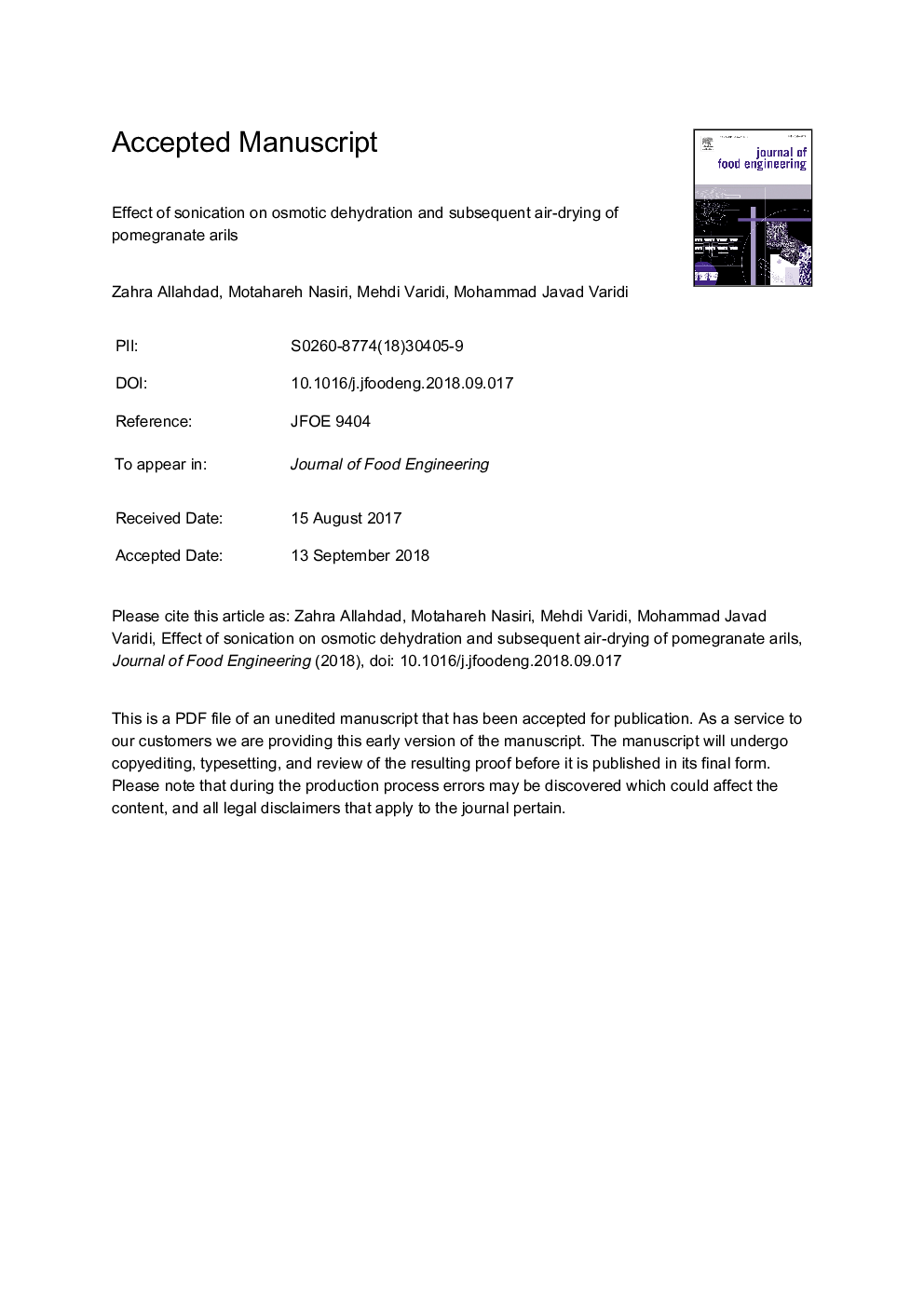| Article ID | Journal | Published Year | Pages | File Type |
|---|---|---|---|---|
| 11024367 | Journal of Food Engineering | 2019 | 40 Pages |
Abstract
The purpose of this research was to enhance the efficiency of osmotic dehydration through applying ultrasound waves with frequencies of 25 and 40â¯kHzâ¯at different intervals. Subsequently, moisture removal rate was estimated in drying of pre-treated arils. Results showed that ultrasound by inducing more detachment of cell wall increased water loss and solute gain during osmotic dehydration. A 2-fold and 2.7-fold increment for water loss at the frequencies of 25 and 40â¯kHz, respectively, was observed at the end of process. Microstructural changes also offered a low resistance to water removal in air-drying ahead and effective diffusivity increased by 43% during the first falling rate period and by 66% during the second rate falling rate period for arils predehydrated at the frequency of 40â¯kHz being more effective than 25â¯kHz. Magee model because of the lowest values Ï2, RMSE values as well as mean relative deviation modulus adequately described the experimental data of water loss and solid gain during osmotic dehydration and ultrasound-assisted osmotic dehydration. Better color quality was among positive impacts of applying ultrasound along with osmotic dehydration at the expense of losing total anthocyanin content and increasing hardness, as compared to the osmo-dehydrated samples.
Related Topics
Physical Sciences and Engineering
Chemical Engineering
Chemical Engineering (General)
Authors
Zahra Allahdad, Motahareh Nasiri, Mehdi Varidi, Mohammad Javad Varidi,
